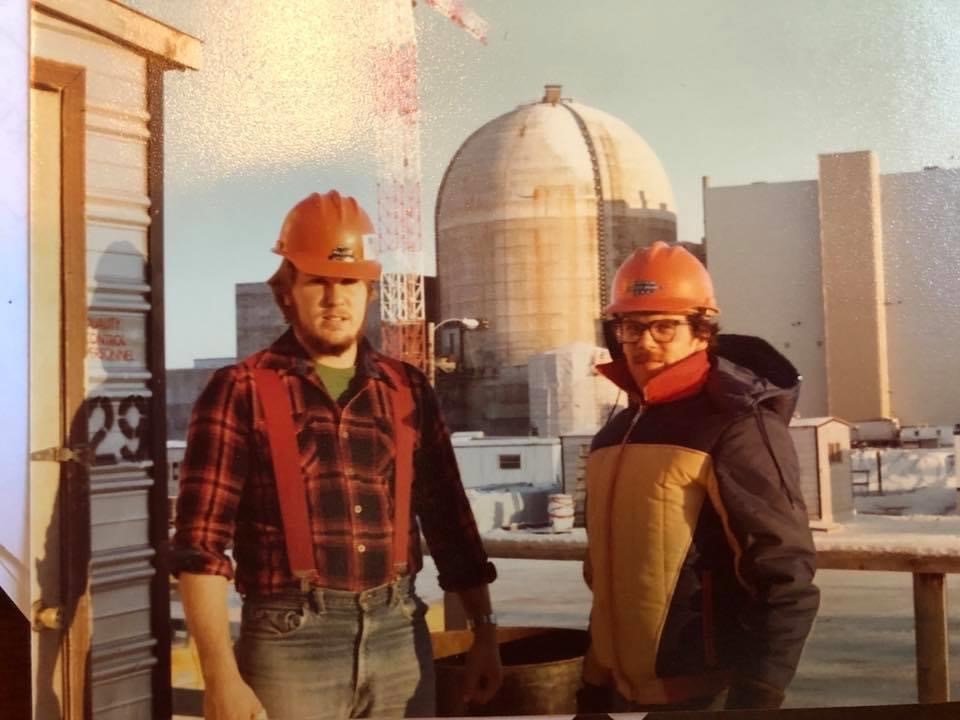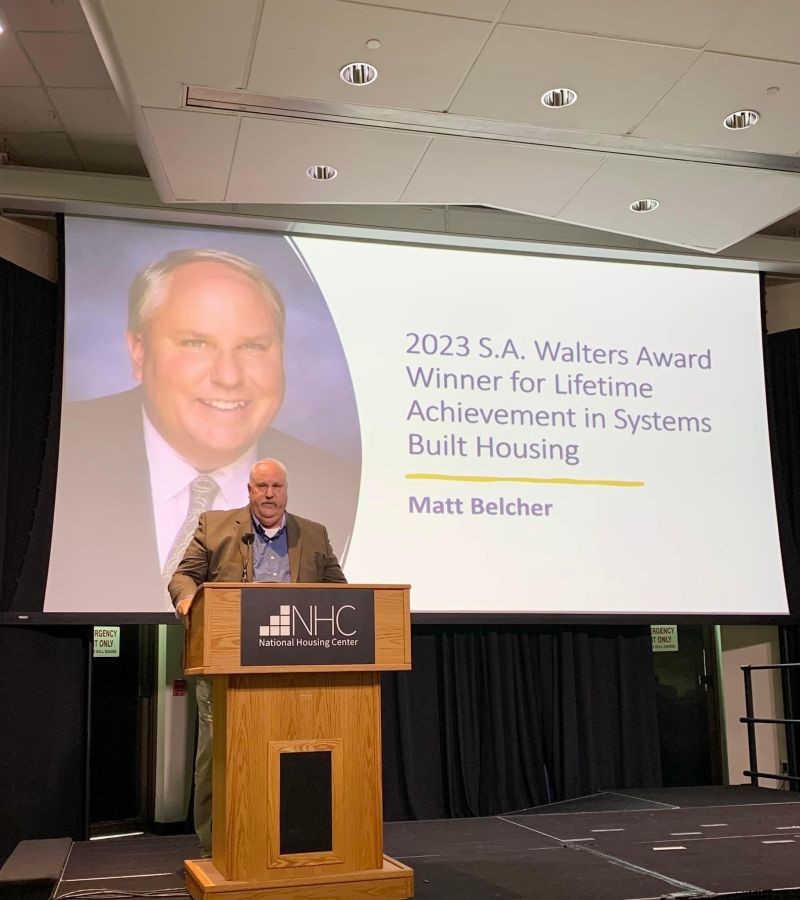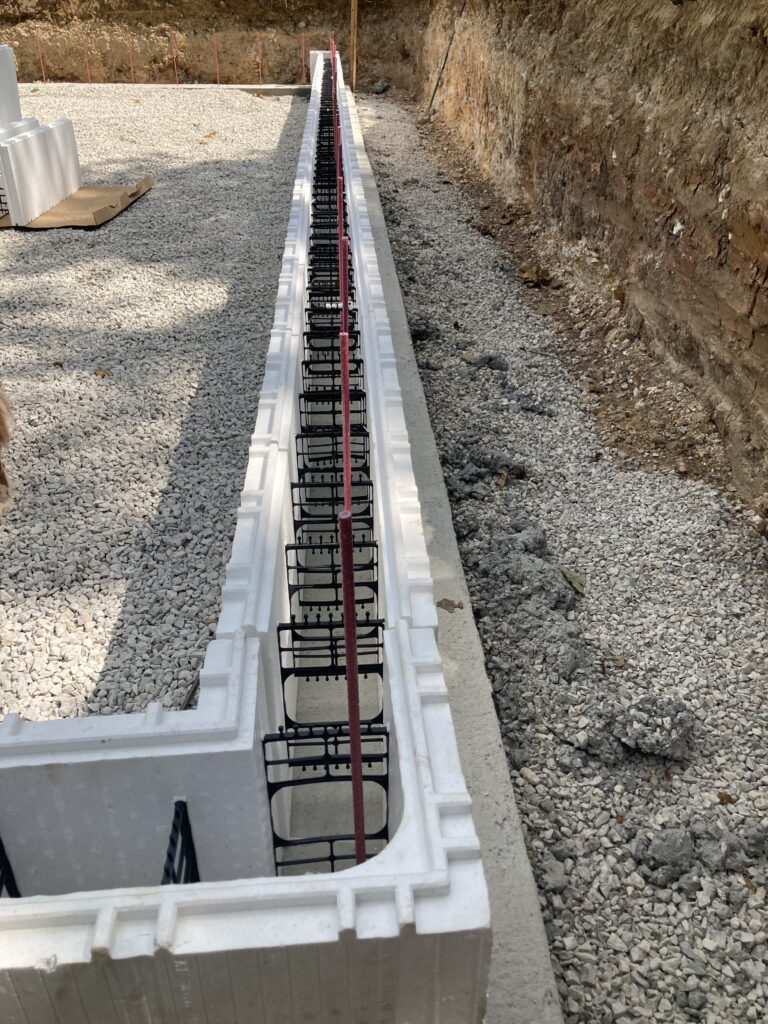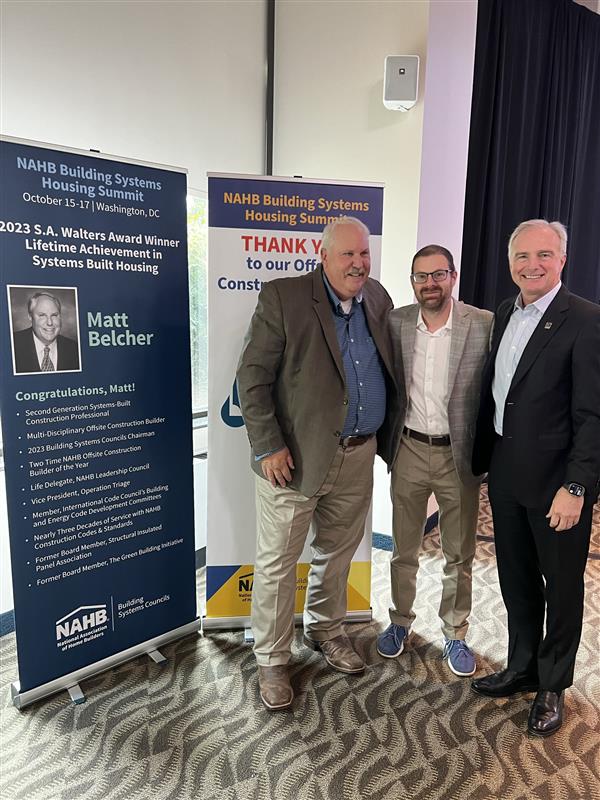
From Nuclear Power Plant Inspector to Code Official and Beyond, Matt Belcher is Making an Impact on Building Safety
Matt Belcher’s impact on building safety can be seen throughout numerous I-Codes – now he’s leading the charge for more off-site construction.
Matt Belcher’s credentials in the world of construction and building safety are as diverse as the many committees he has served on throughout his career. He has not one but three current jobs: Partner and COO of Enhanced Building Systems, Principal of Verdatek Solutions, and Code Consultant at Midwest Energy Efficiency Alliance.
Belcher began his career in nuclear power plant construction, working as a Level I and Level II Inspector for Daniel International Corporation. He later became Director of Code Enforcement for St. Louis County, serving as one of the region’s top building officials.
“I hated to leave that job,” said Belcher reflecting on his director position, but he made the move to work with his dad at Belcher Homes in 1993, a nationally recognized green building consultancy. His dad manufactured pre-fabricated wall panels in the ‘60s and ‘70s, and as a kid, Belcher would join him to work on a project from time to time. When Belcher finally had the chance to work with him again, he couldn’t say no.
“That was it, just the opportunity to work with my dad and have lunch with him every day,” Belcher recalled. “After not even 10 years, we lost him in 2001. I’ve been going ever since. I’ve always stayed heavily involved with code issues.”
Volunteering to Advance Building and Energy Codes
Belcher served on the Energy and Water Committee for the very first International Green Construction Code® (IgCC) in 2012, and he continued to serve on committees for the 2015, 2018 and 2024 editions as well. He has previously served on the International Building Code® (IBC) General Committee in 2021 and is doing the same for 2027.
“It’s fascinating,” Belcher said of his many experiences in the code world. “You’re always learning. The relationships you build, after a while it begins to feel like family. It’s just that way in the whole industry.”
Belcher has served on the Board of Directors for the National Association of Home Builders (NAHB), for which he is also an approved trainer in Advanced Building Science, Advanced Business Management and the Certified Green Building Professional Designation. He has also served on several sub-committees for NAHB, including the Green Building, Energy, and Construction Codes & Standards sub-committees.
His work with NAHB and the industry at large has earned numerous awards and accolades, including the 2023 S.A. Walters Award, which recognizes a lifetime of achievement in the Building Systems industry.

“I’m still flabbergasted, it was quite an honor,” Belcher said of his most recent award. “I’ve been fortunate to win a couple of Builder of the Year awards over the last few years. It’s nice when you love what you do and then they hand you an award for doing it. The fact that all these people, my peers and good friends, thought enough to give me this award – that’s what really blew me away. I’m totally flattered and humbled.”
Leading the Charge for Off-Site Construction
A self-proclaimed “code geek,” Belcher continues to research new materials and is amazed at how far the industry has come over the last decade. He specifically mentioned the creation of structural insulated panels that are lightweight and resilient, as well as fiberglass rebar, which is stronger than steel. He uses an Insulating Concrete Form System (ICF) that is manufactured off-site and reduces the amount of concrete needed by 40 percent.
“I save 40 percent on my concrete costs and 40 percent in energy impact the concrete has,” said Belcher. “I use lightweight material that costs me 20 percent less. If that’s not a win-win, I don’t know what is.”
In addition to his work as a builder, code consultant and trainer, Belcher is also an advocate for off-site construction. He appreciates the flexibility that it provides versus traditional on-site construction, which can be hindered by weather and temperature changes. These issues are not a problem in a factory setting, allowing off-site construction to commence without interruption all year long.
While building materials, including modular homes, are shipped to and from a variety of places, Belcher is part of a team hoping to reopen a former off-site construction facility in Missouri. They are currently looking for a partner/investor to support the project. If successful, they plan to start by manufacturing high-performance wall and roof panel systems and initiate modular and pod manufacturing at a later date.

Their goal is to target multiple markets, including the commercial/hotel sector, by manufacturing panels and mods that serve the needs of those properties. Belcher pointed to Fairfield by Marriott as an example; it is among the many hotel brands that have already employed off-site techniques across America. Fairfield also plans to use modular construction to bolster its expansion in Europe.
Off-Site Construction Standards
These and other off-site construction projects have become easier with the creation of the 1200 series of standards. Developed through a partnership between the International Code Council and the Modular Building Institute, the 1200 Standard covers planning, design, fabrication, and assembly, while the 1205 Standard focuses on inspection and regulatory compliance.
“It kind of makes things uniform,” Belcher said of the new standards. “A lot of people think builders don’t like codes, but we do because it levels the playing field for us.”
As chair of the NAHB Building Systems Council, Belcher proposed a resolution to formally support the adoption of the ICC/MBI 1200 and 1205 Standards. He even shared his views on the matter in a story published on The Seattle Times’ website.
Prior to the development of the new standards, off-site construction could prove to be an unnecessarily complex process. Belcher said that in Missouri, which does not have a state-wide code, the process would begin with the local zoning department. Then a local building official would handle plan review and inspections of the foundations before turning it over to the state.
With the 1200 Standards, Belcher said it’s possible to give some of that responsibility back to local code officials. He believes this is a win for both builders and manufacturers of building components, which can rely on the standards’ uniformity to make smarter decisions.
Going Off-Site for a Good Cause
When Belcher isn’t advocating for the advancement of off-site construction, he’s passionately focused on his non-profit organization, Operation TRIAGE. Founded by Daniel Vargas, Operation TRIAGE’s mission is to provide emergency advocacy and financial relief, mortgage-free homes, and home remodeling/renovations to disabled veterans, first responders and active-duty service members. The non-profit recently received a 2023 Platinum Transparency Award from Candid and will qualify highly ranked for the Charity Navigator next year.
Belcher had worked with Vargas, a retired Technical Sergeant in the United States Air Force, at another non-profit that builds homes for injured/disabled veterans and first responders. Their passion for helping our heroes (Operation TRIAGE’s slogan is, “Supporting Those Who Provide the Blanket of Freedom We All Sleep Under”) inspired them to create a separate non-profit.
“We [wanted to] address all kinds of housing issues,” Belcher explained. “We do a lot of homes in bad repair. A lot of the time [the veterans are] wheelchair-bound, they have no means to make the repairs, so we’ll step in to help with that. We do a lot of advocacy stuff, helping them navigate through the VA to get their [disability] rating where it should be.”
Belcher and Vargas are now working with the city of San Antonio, Texas (where Operation TRIAGE already provides services for veterans) to complete an off-site construction project. The project would be in conjunction with NAHB to coincide with its fall leadership meeting in San Antonio. Belcher, who is Chair of the NAHB’s Building Systems Council, thinks this would be a great way to drive recognition for off-site construction by NAHB leadership while supporting a great cause.

“The beauty of off-site is that we don’t need a full year to get something done,” said Belcher. This applies to established neighborhoods as well, whether upgrading a veteran’s current home or building a new one from scratch.
“We can go into an existing home and do a lot of upgrades with less disturbance to the occupants by manufacturing or fabricating things off-site,” Belcher continued. “We do everything from wheelchair ramps and components up to complete mods, manufactured homes, etc. Quite a bit of off-site goes into these projects.”
To learn more about off-site construction, visit the Code Council’s dedicated webpage.








